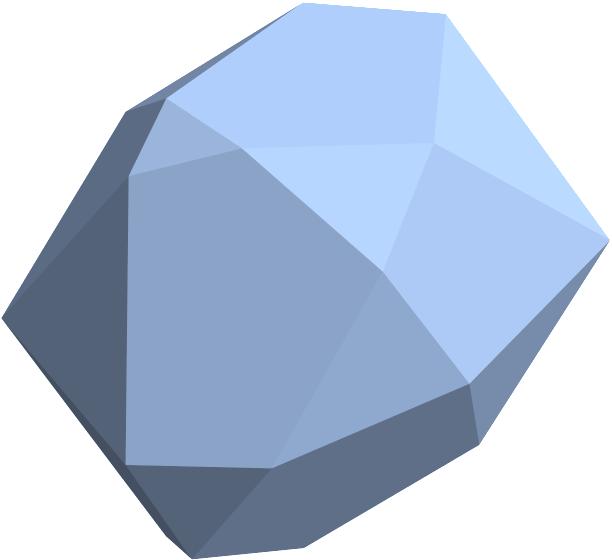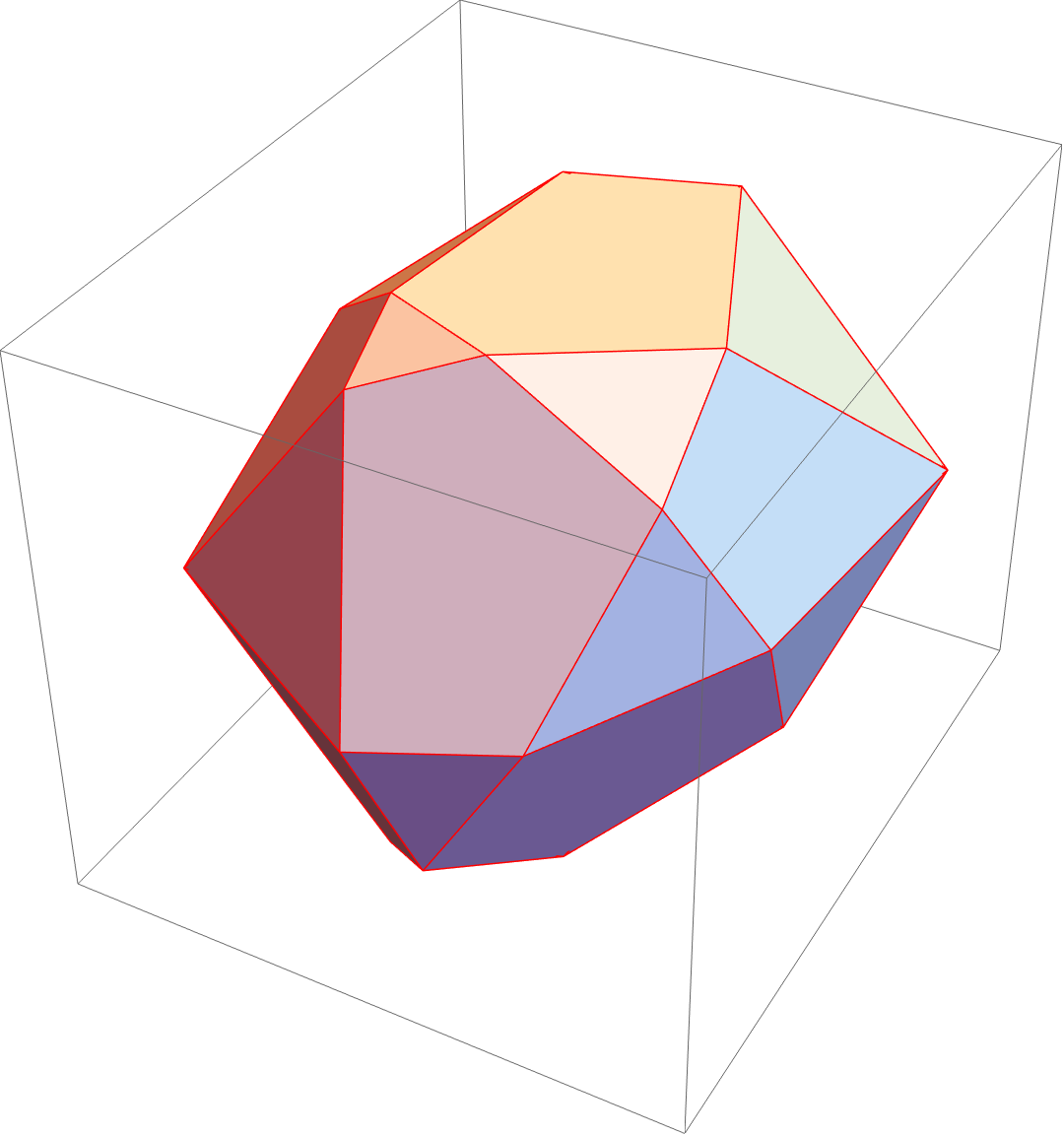From some geometric computations I get a lot of 3 dimensional points. From theory I know two facts: The points define a convex polyhedron, and this polyhedron has non-regular 3-, 4- and 5-gons as faces.
Here is a simple example:
data = {
{0.21737620787507367`, 0.28204133994445385`, -0.6381966011250104`},
{-0.040325224750231564`, 0.3723248410400371`, -0.6275534829989065`},
{0.1672600561785624`, -0.3071899418976666`, -0.623794735142785`},
{-0.40371520600005606`, 0.10830656541096881`, -0.6045922471664844`},
{-0.1656861048330671`, -0.4587939734903912`, -0.6045922471664844`},
{0.20241349847734352`, 0.482246933272588`, -0.5386575383182851`},
{-0.4222912360003364`, 0.40162283177245456`, -0.4281746070019348`},
{0.0639979843841827`, -0.6963366498275445`, -0.3852375061707666`},
{0.5124611797498108`, 0.019901688178267346`, -0.37150307459109644`},
{-0.6832815729997477`, -0.4016228317724545`, -0.105572809000084`},
{-0.5897762563863808`, 0.25456081688631615`, -0.05985083759092051`},
{-0.047213595499958017`, -0.7951478980668848`, -0.047213595499957905`},
{0.28885438199983166`, -0.6881909602355869`, -2.7755575615628914`*^-17},
{-0.28885438199983166`, 0.6881909602355867`, 0.`},
{0.04721359549995807`, 0.7951478980668849`, 0.04721359549995793`},
{0.5897762563863808`, -0.25456081688631615`, 0.05985083759092051`},
{0.6832815729997476`, 0.4016228317724544`, 0.10557280900008403`},
{-0.5124611797498106`, -0.01990168817826732`, 0.37150307459109644`},
{-0.06399798438418271`, 0.6963366498275444`, 0.38523750617076646`},
{0.4222912360003364`, -0.4016228317724546`, 0.42817460700193477`},
{-0.20241349847734355`, -0.4822469332725877`, 0.5386575383182852`},
{0.165686104833067`, 0.4587939734903912`, 0.6045922471664844`},
{0.403715206000056`, -0.10830656541096874`, 0.6045922471664844`},
{-0.16726005617856243`, 0.3071899418976664`, 0.623794735142785`},
{0.04032522475023116`, -0.37232484104003727`, 0.6275534829989065`},
{-0.21737620787507372`, -0.282041339944454`, 0.6381966011250106`}
};
Display of the convex hull is easy:
cHullDetailled = ConvexHullMesh[data, PlotTheme -> "Detailed"]
or
cHullPolygons = ConvexHullMesh[data, PlotTheme -> "Polygons" ]
Images are nice and as expected:
Faces of the meshes can be computed with:
polygonsDetailled = MeshPrimitives[cHullDetailled, 2];
Length[%]
(* 48 *)
and
polygonsPolygons = MeshPrimitives[cHullPolygons, 2];
Length[%]
(* 48 *)
In both cases the reported polygons are the SAME triangles. How can I get the 4- and 5 -gons that I need for other computations instead?







